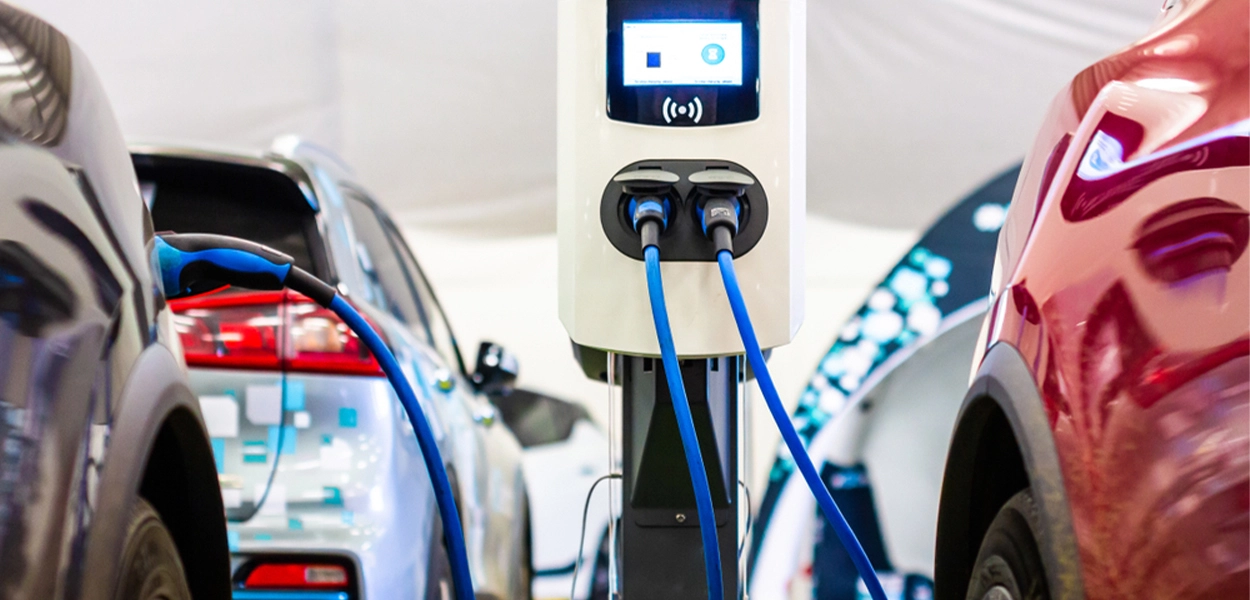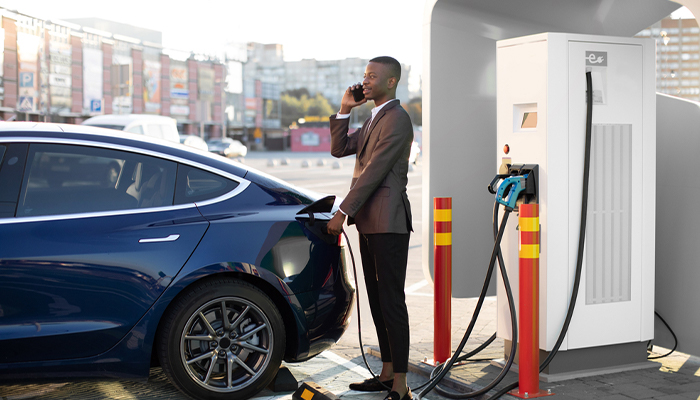Guide to Knowing About Tesla Supercharger Development Cost
Guide to Knowing About Tesla Supercharger Development Cost
june 14, 2023 13:54PM
Guide to Knowing About Tesla Supercharger Development Cost
june 14, 2023 13:54PM

Tesla Superchargers, or 480-volt DC fast chargers, are also known as Tesla Superchargers. The supercharger is a fast charger for electric vehicles.
Tesla owners no longer have to worry that their electric vehicle will run out of fuel "because it is programmed to take routes with superchargers on the way. Superchargers can charge up to 11 miles per hour, which is a big plus. Tesla's extensive network of fast-charging stations has effectively eliminated the biggest concern electric car owners have about running out of battery.
There's still some confusion, even though there are well over 40,000 superchargers worldwide. People don't know how they work or how much they cost. They also have no idea who can use them. Here we will lift the veil on developing an EV charging system like the Tesla Supercharger and understand what it is about.
Tesla batteries are equipped with an "onboard charge." Onboard chargers transform alternating current (AC) from a charging device into DC energy. The battery requires DC energy to be charged.
Tesla Superchargers are different from other EV chargers because they release DC electricity. This bypasses the onboard charger and charges the battery directly with DC energy. The vehicle can charge faster because the electricity goes straight to the battery and does not have to go through the onboard charging station.
The built-in Tesla Trip Planner is one of its best features. The Trip Planner is similar to a GPS but maps out your route so that you can pass Superchargers on your way to your destination.
The app will also tell you how long you must stop at each charging station to reach your destination quickly and without running out.
The Trip Planner app makes charging your EV on any road trip easy.
Supercharging can be confusing. Supercharging for most Tesla owners is not free.
Tesla has run several campaigns that have given customers free supercharging for life. This is the first time in a long time that Tesla has launched a campaign of this kind. But this was a great deal for those lucky enough to be accepted into one of the programmes.
These are some Tesla vehicles that might qualify for free supercharging.
The Model S was released between 2012 and 2022, excluding the Model S 40.
Model 3 Performance models released between 2018 and 2019 may come with unlimited free supercharging. However, they can only be used by their original owner. The free supercharging is void if purchased or used.
Tesla Models delivered between December 15, 2022, and December 31, 2020, may receive 10,000 miles of supercharging for free.
Your Tesla account will allow you to check if your Tesla qualifies as a candidate for any free supercharging promotions. Log in and click on Manage. Then, view the details for your Tesla car. Check if "Free Unlimited" supercharging is listed. Call Tesla's customer support directly.

Our video explains how to calculate the actual Tesla supercharger development cost.
Costs for charging your Tesla vary between charging stations, but you can generally expect to pay about $25 to charge your battery entirely from 0% up to 100%. This is not only cleaner, but also cheaper than a full tank of gasoline!
You can be charged per kilowatt hour (kWh) at a supercharger or per minute. You can choose a charging station with the trip planner and see the pricing structure that the station charges.
Most superchargers charge per kWh, so you'll be charged for every kWh used to recharge your battery.
Each supercharging location has a different price per kWh, but the average is around $0.25.
The per-minute supercharger is less common than the per-kWh charger. You'll find per-minute superchargers only in states that have regulations prohibiting anyone other than a utility company from selling electricity on a kWh basis.
Chargers per minute offer four different rates:
Tier one rates are the lowest applicable when charging cars at or below 60 kilowatts (kW).
Tier two rates are charged when vehicles charge above 60 kW and below 100 kW. They have the second-lowest rate.
Tier three rates apply when charging over 100 kW but below 180 kW. They have the second-highest rate per minute.
Tier four rates are the most expensive per minute when charging over 180 kW.
Tesla Superchargers can only be used by Tesla owners. Superchargers come with a Tesla-specific charging connector.
Elon Musk, the CEO of Tesla, announced in July 2021 that the Supercharging Network would be available to all-electric vehicles, including those not manufactured by Tesla, by the end of the year.
Elon Musk announced the expansion of superchargers on Twitter, his favourite platform. Source: Twitter
This network has been launched as a trial programme only in other countries.
Superchargers bill you at a higher per-kWh rate than your utility.
It will cost you between $10.49 and $17.55 for your Tesla to be fully charged at home, depending on which model you own.
Despite the cost savings, you will likely want to charge your phone at home as your primary charging source. Why? It's suitable for your car. It's better for your vehicle.
By charging your phone at home, you will not only save money, but you'll also extend the battery life.
What you do doesn't matter; charging your Tesla will be cheaper than buying a full gasoline tank. Solar power is a great way to charge your Tesla. Install enough solar panels to meet your electricity needs and charge your Tesla.
Solar panels are a substantial upfront investment, but they're the only thing you'll have to pay once installed. If you divide the installation price by the amount of electricity that will be produced over the 25-year lifespan of the system, each kWh will cost only $0.11.
If you want to secure your savings, installing solar as soon as possible is best. You will end up paying less for electricity over time to charge your Tesla if you use solar power instead of grid electricity.
There are also various rebates and incentives at the federal, state, and utility levels. Contact us today!
Strategy
Design
Blockchain Solution
Development
Launching
Testing
Maintenance
Contact US!

Plot 378-379, Udyog Vihar Phase 4 Rd, near nokia building, Electronic City, Phase IV, Sector 19, Gurugram, Haryana 122015
Copyright © 2025 PerfectionGeeks Technologies | All Rights Reserved | Policy
Contact US!

Plot 378-379, Udyog Vihar Phase 4 Rd, near nokia building, Electronic City, Phase IV, Sector 19, Gurugram, Haryana 122015
Copyright © 2025 PerfectionGeeks Technologies | All Rights Reserved | Policy